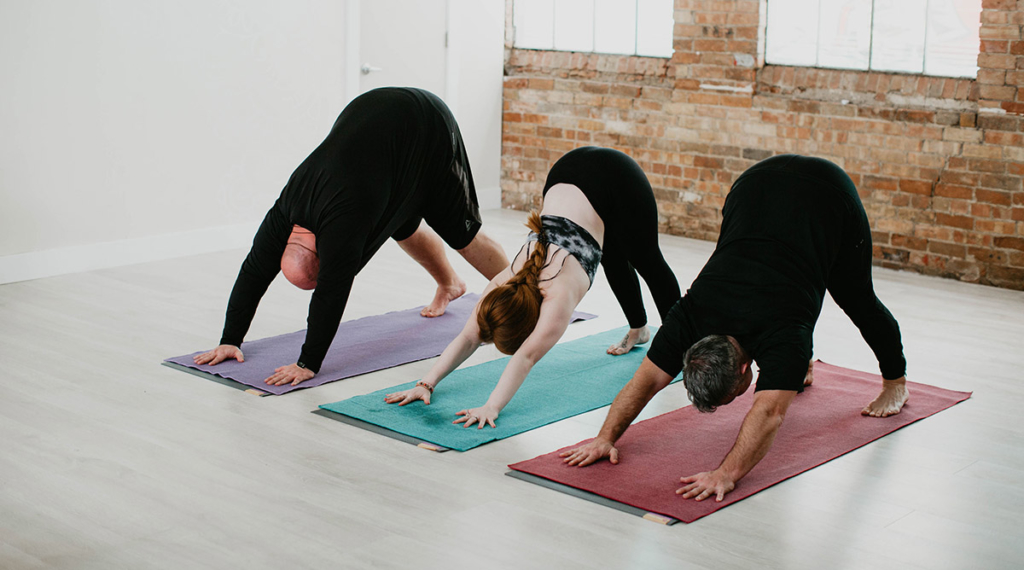
I’ve been ambivalent about the phrase “yoga pose” for a while. At one point, I resolved to stop using it. But it wasn’t easy. Thirty-plus years of using the phrase made it a hard habit to break. My problem with the phrase has to do with how it shaded the concept of asana. To me, “yoga pose” implies a static, immutable concept. It goes against my understanding of asana as a process.
I’ve given up on retiring “yoga pose.” When a colleague pointed out that the first definition of “pose” in her dictionary was “repose,“ that made it more palatable. My teacher, Pujari Keays, has long said that asana means rest. Asana practice at its best is a state of rest within our awareness of ever-changing sensations in the body as we practice. The key is to understand asana as a process rather than an end goal to be attained.
Outer vs. Inner Experience
If you’ve practiced mindfulness meditation, you are likely aware that the body is an important anchor for awareness. And if you tune into your body, from the inside, you begin to see that what we call “body” is really a continuing succession of sensory experiences. We become aware of sensations coming through all our sense doors—seeing, hearing, tasting, smelling and touching. There’s really a lot going on, all the time. Our bodies are always in process.
When we think of asanas as static poses to be accomplished, we solidify our experience around a static goal. Then we impose all sorts of judgments and evaluations onto our practice. It becomes about achieving a “perfect” outer form. It’s not a coincidence that this is what we often do to our bodies outside of asana practice. We judge them based on their outer form—appearance, age, weight—mostly cultural concepts around what is or is not attractive. Then we bring these evaluations to our asana practice.
But can we, instead, view our bodies and our asana practice from the inside? Can we understand our bodies and our asana as processes that are constantly unfolding rather than objects to be judged and perfected?
Understanding Asana as a Process
Understanding asana as a process requires that we change the way we think about yoga practice. Instead of thinking of asana as the various shapes we place our bodies in—the shapes we call “poses”—we understand each asana as a process that begins with our intention to practice a particular pose. In other words, we give equal value to all the movements we make to enter and leave the formal poses, from the moment we decide to practice a particular asana.
When you practice this way, it’s helpful to hold back a bit. So instead of moving up to your maximum edge, you back off a bit. You practice at your intelligent edge. At the intelligent edge, it’s easier to feel the subtle processes happening in the body, such as the wave of the breath that moves your body internally. The unfolding of the asana: what new sensations are arising as you breathe and relax? How do the sensations evolve over several breaths? Then what motivates you to leave the pose? What is the process of returning to a neutral position?
How Understanding Asana as a Process Enlivens Your Practice
So next time you decide to practice an old friend such as Adho Mukha Svanasana (Downward Facing Dog Pose), be aware of the entire process, from the simple intention to begin, to your return to a neutral pose. From Bharmanasana (Tabletop Pose), feel how your feet and hands prepare to push up into the pose. Then feel the process of lifting the pelvis. Then stop at a comfortable place and feel your body oscillating as you breathe. Experience the breath transforming your asana from the inside. Then, what are the sensations that compel you to return to Bharmanasana? And what is the residue you feel from having practiced Adho Mukha Svanasana?
When we delve into the moment-to-moment internal experience of our asana practice, our practice becomes much more engaging. Each asana, each practice, becomes unique. We can do Downward Facing Dog Pose (Adho Mukha Svanasana) thousands of times, but experience it as fresh and new each time. So remember, the journey is the destination. Keep your asana in process; let it evolve along with you.
